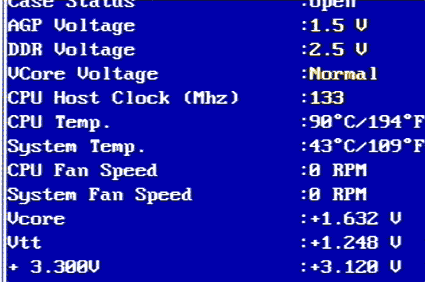A New Kind Of Fast: AMD Athlon XP 2200+
Now Required: Protection Against Thermal Death, Continued
In practice, even the newest boards with the VIA KT333 chipset cut a sorry picture: in our last KT333 comparison VIA KT333 Put To The Test: 18 Motherboards Compared , out of the 18 different manufacturers, only Asus and Soltek integrate thermal protection on the board. Motherboards from the other manufacturers respond just as we show in our THG video .
Simultaneous to the launch of the new Athlon with the T-bred core, AMD has given the following guideline to the motherboard makers: starting June 10, all motherboards must have integrated thermal protection in order to receive certification from AMD. The costs per board for this thermal protection logic runs at approximately less than $1. Astonishingly enough, the AMD presse kit includes a motherboard (Gigabyte GA-7VRXP, Rev. 1.1), which does not integrate thermal protection circuitry. It should be noted that the Gigabyte board mentioned here was the winner in our last test, but today, we cannot make the same recommendation. The manufacturer needs to quickly modify the board if it is interested in getting support from AMD.
Despite the current situation with thermal protection circuitry, some boards are still equipped with the old thermistors.
In the short term, a general improvement on the market is not in sight, because most of the manufacturers have long since introduced their KT-333 boards, and moreover, they don't expect to integrate thermal protection circuitry on their boards until a new chipset has been launched (e.g., VIA KT333A or KT400).
No improvement: the Gigabyte board provided by AMD does not switch off when the CPU temperature surpasses 90 degrees Celsius!
Get Tom's Hardware's best news and in-depth reviews, straight to your inbox.
Current page: Now Required: Protection Against Thermal Death, Continued
Prev Page Now Required: Protection Against Thermal Death Next Page Comparison: T-Bred Vs. Palomino Vs. T-Bird Vs. (Barton)
